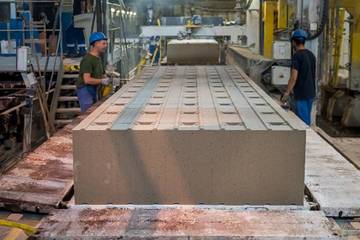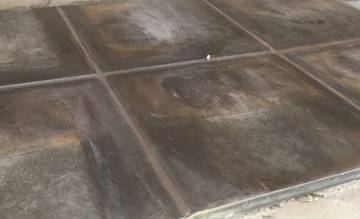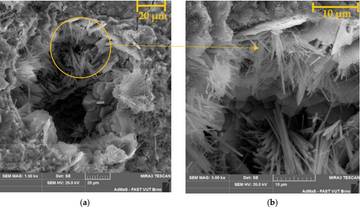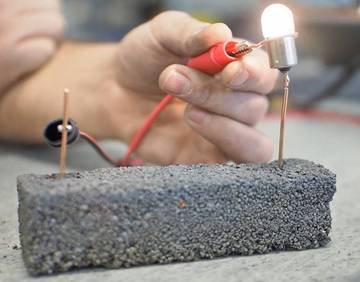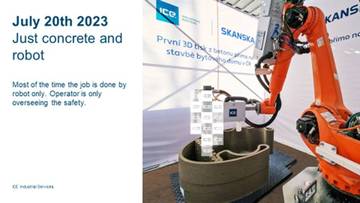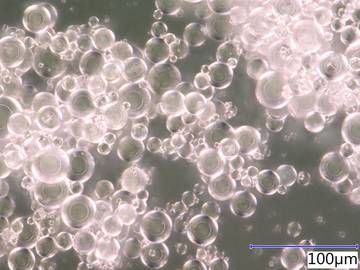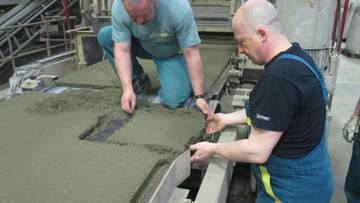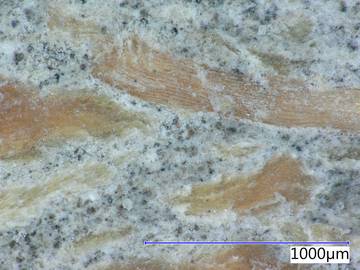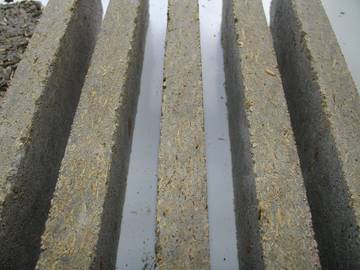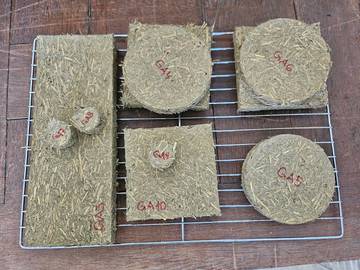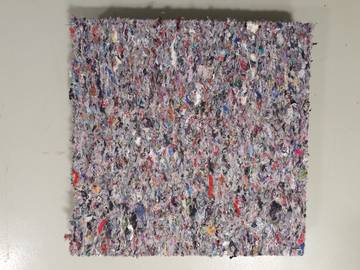Research Groups in
Advanced Building Materials
Research and development of progressive building materials, their microstructure and durability
Leader: prof. Ing. Rostislav Drochytka, CSc., MBA., dr.h.c.
The main topic of the research group is the research of unique silicate and polymer building materials by innovative physicochemical methods. The emphasis is placed on maximizing the synergistic effect of all types of input components in the resulting materials. For example, the development of a system for the rehabilitation of chemically attacked and stressed building structures, research on electrically conductive silicates for grounding and heating, the study of the effect of the interaction of cement composites with superabsorbent polymers on increasing the incorporation of secondary raw materials, or the development of cement mixtures for 3DCP.
Lightweight building materials: autoclaved aerated concrete, lightweight plaster and mortar mixtures, lightweight floors, lightweight artificial aggregates based on various types of fly ash etc. are the subject of research in this area. The group has recorded significant results here, especially in connection with the use of secondary raw materials (e.g. waste polyester lint).
Durability: research of the degradation of building materials under the influence of aggressive environments using advanced methods (DTA, XRD, CT and SEM with EDX) to study the microstructure.
Polymers: research and development of coatings, polymer mortars, polymer concretes, jointing compounds, renovation compounds, adhesives, hydrophobization, CIPP and SIPP.
Classical and Modern Binders
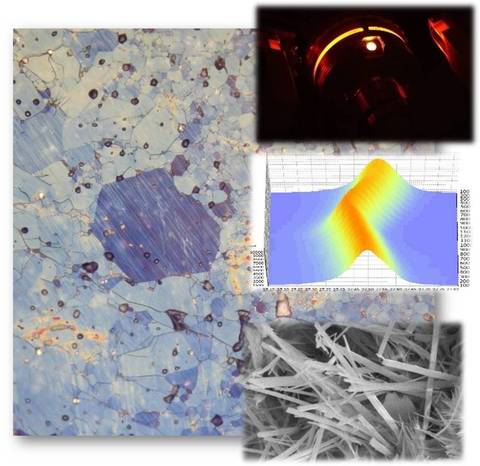
Leader: doc. Ing. Karel Dvořák, Ph.D.
The team works on research and development of modern types of inorganic binders. It focuses on high-value sulphate binders on hemihydrate and anhydrite basis, on lime-based binders and on new types of hydraulic binders derived from Portland cement. The analysis and characterization of the microstructure of binders using a wide range of methods, research on high temperature processes and the study of hydration processes are integral. Currently, the group members are working on LC3 cements, belitic-based cements and CSA cements.
Mortars and concretes with inorganic binders
Leader: Prof. Ing. Rudolf Hela, CSc.
The group is dedicated to the development of new types of structural concretes using brick or concrete recyclates in fractions of 4 to 22 mm as partial or complete substitutes for natural aggregates. The reason for this is the accumulation of demolition waste and its mere landfilling, while on the other hand the supply of natural aggregates is running out. This research focus includes the use of finely ground brick and concrete recyclates, which can be used as Type II active admixtures instead of cements or used in special high-value concretes. Another focus is the development and use of special concretes such as ultra-high strength concretes, water permeable concretes, concretes partially capturing precipitation water using superabsorbent polymers, development of cementitious fine-grained composites for 3D printing of precast concrete or monolithic structures with respect to printing conditions, shapes of printed elements and optimal control of dosage of superplasticizing and accelerating additives during printing. The Group works with a number of foreign sites and building material manufacturers not only in Europe (Heildelberg Cement, Cemex, Mapei, SIKA, MC Bauchemie), but also in the United Arab Emirates, for example.
Eco-friendly building materials
Leader: Doc. Ing. Nikol Žižková, Ph.D.
The main activity of the research group is the development of eco-friendly building materials, with a strong emphasis on maximizing the use of recycled materials, secondary or renewable raw materials, and other waste substances and by-products, while maintaining their functional properties. This includes both inorganic-based materials and organic-based materials, particularly those based on lignocellulose. The development and application of bio-based materials, considering the presence of biogenic carbon, can contribute to achieving the sustainability goals and environmental policies of the EU by utilizing resources with a lower environmental impact and product carbon footprint (PCF). From the perspective of the use of the materials developed, the group develops materials for both load-bearing and non-load-bearing structures. These innovative materials are used in the design of low-energy and passive houses. The group collaborates with numerous domestic and international research institutions as well as building material producers and incorporates the latest trends into its research and development activities.
Research and development of progressive building materials, their microstructure and durability
Leader: prof. Ing. Jiří Zach, Ph.D.
The main activity of the group is the development of new thermal and acoustic insulation materials based on secondary and easily renewable raw materials. Furthermore, the development of new types of advanced insulation materials and super-insulation materials (vacuum insulation panels - VIP). The group is also engaged in the study (primarily) of the physical properties of building materials from the perspective of building physics and heat and moisture transport mechanisms. It is also dedicated to the issue of reducing the energy requirements of building structures, including the design, development and testing of thermal insulation and renovation plasters and insulation systems. In the theoretical area, the group carries out key studies, assessing the thermal and acoustic properties of building structures (e.g. calculations of the thermal properties of masonry according to EN 1745, etc.). The group cooperates with a number of foreign scientific institutions, such as TU Vienna, University of Ljubljana, Vilnius Gediminas Technical University and Riga Technical University.
Ceramics and refractory materials

Leader: doc. Ing. Radomír Sokolář, Ph.D.
Basic and applied research in the field of building ceramics and refractory materials. Basic research: development and research of anorthite sintered bodies, forsterite with the possibility of using more accessible or secondary raw materials. An important point of research is also the study of the sol-gel method for possible application in the field of production of primarily non-shaped refractory materials (refractory concretes). Research works are based on a detailed study of the microstructure of the assessed materials (mineralogical and chemical composition, porosity, etc.) depending on different conditions of ceramic body formation (composition of the raw material mixture, firing conditions, etc.) and in the context of the useful properties of the material (strength, conductivity, refractoriness, etc.)
Applied research: primarily it is necessary to mention the long-term cooperation with brick producers (Wienerberger, Heluz) in the field of solving technological aspects of production, especially in today's current issues of reducing energy and environmental demands. In the field of refractory materials, it is a long-term partner of PD Refractories (RHI Magnesita Czechia) and Prumker.
doc. Ing.
Jiří
Bydžovský
CSc.
Research Theme Coordinator Advanced Building Materials
